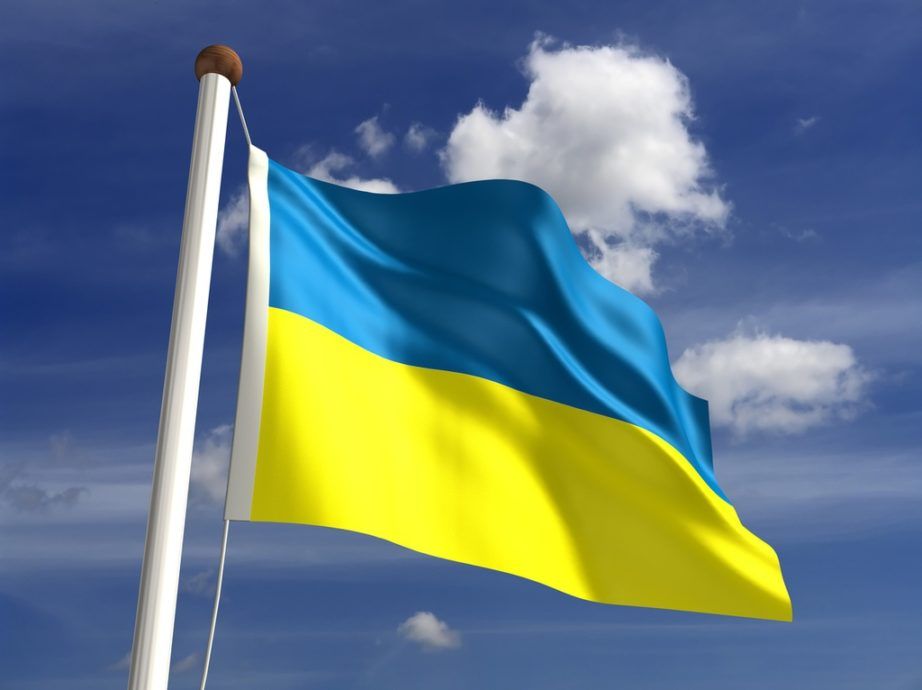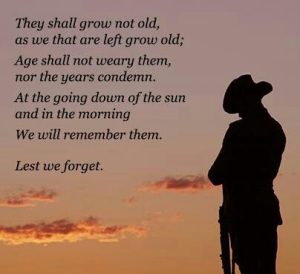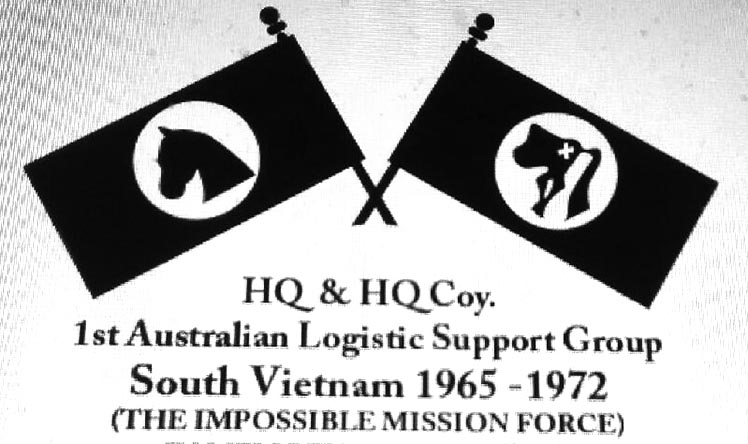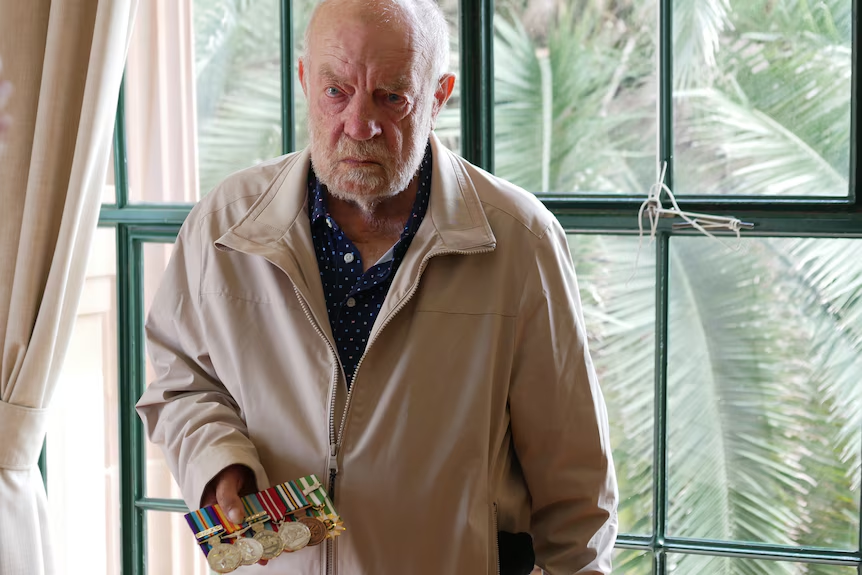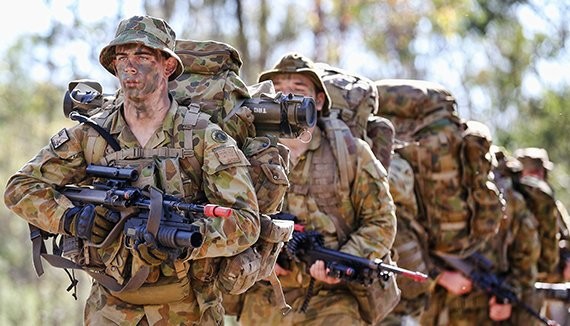On Remembrance Day we commemorate those who died in the First World War, as well as all Australian Defence Force personnel who have fought and died in wars, conflicts and peacekeeping operations. The year 2024 marks the 106th anniversary of the signing of the Armistice between Allied forces and Germany, which ended the First World War (1914–18). On 11 November 1918, the guns of the Western Front fell silent after four years of continuous warfare. More Australians were killed and wounded in the First World War than in all subsequent conflicts combined. As a mark of respect Australians are encouraged to pause at 11am for one minute’s silence and remember all those who died or suffered for Australia in all wars and armed conflicts. Defence joins all Australians on Remembrance Day to acknowledge, honour and remember the courage and sacrifice of those who have served our country and those who gave their lives in service to our nation.
Ukraine Daily
Zelensky’s Vision for Defence Independence
On Nov. 9, Ukrainian President Volodymyr Zelensky proudly announced that Ukraine had reached a significant milestone in its national defence capabilities, producing its first 100 missiles domestically. This achievement is part of a larger defence initiative launched in response to Russia’s full-scale invasion in February 2022. Since then, Ukraine has focused intently on strengthening its military independence, with particular attention to missile and drone technology, to bolster its defences and deter further aggression.
Following the outbreak of war, Ukraine intensified its efforts to develop indigenous weapons, with the missile program becoming one of the central pillars of its defence strategy. In a speech earlier this year, Zelensky highlighted “good dynamics” in Ukraine’s arms production, a momentum he attributed to the country’s commitment to self-sufficiency in defence. This announcement was followed in August by news of Ukraine’s first successful test of a domestically produced ballistic missile, an accomplishment that Zelensky celebrated as a testament to the country’s growing military capabilities.
Although the details of the specific missiles produced have been kept confidential, Ukraine’s missile program includes a highly anticipated project: the Hrim-2 ballistic missile, a system that has been under development for years. The Hrim-2, which is speculated to have been the missile tested in August, represents Ukraine’s ambition to field long-range missile capabilities, providing a strategic counterbalance to Russia’s superior missile arsenal.
Alongside ballistic missile development, Ukraine has also been advancing drone capabilities tailored to its unique battlefield requirements. One such development, the missile-drone “Palianytsia,” adds a new layer to Ukraine’s defence by integrating missile and drone functionalities for flexible strike options. In his Nov. 9 address, Zelensky praised the variety of new drones capable of defending Ukrainian positions and striking deep into Russian territory. He emphasized that these domestic creations are critical to the Ukrainian military, not only for frontline defences but also for penetrating enemy lines.
The successful production of missiles and drones underscores Ukraine’s goal to expand its defensive and offensive capabilities independently of foreign assistance. This ambition is driven in part by Western restrictions on Ukrainian forces regarding the use of foreign-provided weaponry for strikes on Russian soil. Zelensky reiterated that Ukraine’s domestic production efforts are essential in circumventing these limitations, as the country’s Western allies, including the United States, have yet to revise their policies on long-range strikes.
Zelensky’s emphasis on Ukraine’s increasing capability to independently produce artillery, ammunition, and advanced technology like drones signals a pivotal shift in Ukraine’s defence strategy. While international military aid has been vital, the Ukrainian government has consistently stressed the importance of self-reliance in securing its borders and reclaiming occupied territories. By producing long-range weapons within its borders, Ukraine is taking concrete steps toward a more resilient and self-sustaining defence system.
As the war continues, Ukraine’s advances in military technology represent more than just an answer to immediate threats; they symbolize the nation’s determination to secure a future of greater strategic autonomy. For Ukraine, the production of its first 100 missiles marks not only a technological achievement but also a profound statement of resilience and a promise to defend its sovereignty against any adversary.
At 11 am on November 11, 1918, the thunder of artillery on the Western Front finally ceased, bringing to an end over four years of relentless warfare. It was a moment of collective sigh for the world, as the guns fell silent and the bloodshed of World War I came to a close. The Allied armies, after months of intense combat, had succeeded in driving back the German forces, leading to the signing of an armistice agreement. This agreement was effectively an unconditional surrender, and for soldiers and civilians alike, it marked not only the end of a brutal conflict but also the beginning of a cherished tradition in honouring those who had given their lives.
In the aftermath of this global tragedy, November 11th at 11 am gained a sacred significance. Known initially as Armistice Day, the date became a universal reminder of the enormous sacrifice made by the millions who served and fell. Over 70 million people were mobilized in World War I, and tragically, between 9 and 13 million lives were lost—many of whom lie in unknown graves, their identities and stories lost but their sacrifice everlasting. This “Great War” transformed our world, sparking the need for a solemn pause to remember those who served, those who died, and those who would continue to fight in future conflicts.
The first anniversary of the armistice in 1919 saw the institution of a two-minute silence at the new Cenotaph in London. This quiet homage was inspired by the Australian journalist Edward Honey, who suggested the silence as a way to honour the fallen with a collective, peaceful gesture. With the support of King George V, who called upon all in the British Empire to observe the silence, the tradition took root as a powerful moment of reflection and unity.
In 1920, the significance of the day was deepened with the interment of an unknown soldier, buried with full honours in Westminster Abbey in London and at the Arc de Triomphe in Paris. This act gave a face to the countless unidentified soldiers whose families and nations mourned them. Over a million people came to pay respects in London alone, creating a legacy that other Allied nations would adopt in the years that followed.
After World War II, Armistice Day evolved into Remembrance Day to honour the fallen in all wars. This shift reflected the broader toll that modern conflicts had taken on society, expanding the day’s focus to encompass the memory of those who died in both world wars and all subsequent conflicts.
In Australia, Remembrance Day once again became a focal point in 1993 on the 75th anniversary of the armistice. The remains of an unknown Australian soldier from a First World War cemetery in France were brought back home and laid to rest in the Australian War Memorial’s Hall of Memory in Canberra. This powerful ceremony resonated deeply with Australians, restoring the importance of Remembrance Day as a day for the nation to come together in mourning and gratitude.
Since then, Remembrance Day has become an enduring tradition, formally marked in 1997 by Governor-General Sir William Deane, who proclaimed it a day to observe one minute’s silence. This solemn moment allows us to honour all who have served and sacrificed for Australia in conflicts across the world, past and present.
Each year, at the eleventh hour of the eleventh day of the eleventh month, Australians and people around the world pause in silence. This silence is more than just a moment—it’s an act of unity, a tribute to courage, and a commitment to remember the sacrifices that shaped our freedoms. The cost of our peace has been great, and by remembering those who served, we honour their legacy and reaffirm our commitment to peace.
On November 11, let us all join together to reflect, respect, and remember the courage and sacrifice of our servicemen and women.
The book will be on all bookshelves within a week or two. The price of the book is mis-leading. The normal average price in Australia is $32.99, but will be cheaper in some stores such as Big W. The price in New Zealand will be around $34.99.
With the book in demand from different Book Agencies, Big Sky Publishing has decided to print another batch.
Sadly one of the 38 veterans in the book, has passed away. Trevor Gordon, he and his story will now be ‘ Never Forgotten’.
Remember all the proceeds from this book will be donated to Legacy.
Let me know, how you all go.
Thank you all for your stories.
Take care,
Dave Morgan
0407 394992
CLICK LINK for more information
We have a reunion coming up in October next year and was wondering if you could give us a bit of a plug.
Headquarters & Headquarter Company
1st Australian logistic support group (1 ALSG) ex Vietnam
To be held in Busselton WA
From Friday the 24th of October till the 28th of October 2025
For more details contact
Tony Brown 0428 852 736 email [email protected]
Trevor Sargent 0400 803 554 email [email protected]
Thanks for your support.
Tony Brown
The Krakow Post
Following Donald Trump’s election as the 47th President of the United States, significant geopolitical shifts are unfolding in the Middle East. Qatar, a Gulf nation that has long hosted the Palestinian political and militant group Hamas, recently informed Hamas leadership to leave their Doha headquarters. Some observers attribute this abrupt change to Trump’s election.
According to senior Biden administration officials, the United States conveyed to Qatar that continued support for Hamas—especially after the group’s recent hostage executions and refusal of ceasefires—would impact Qatar’s standing in the international community. In previous years, the US had accepted Qatar’s role in hosting Hamas as it provided a communication channel with the group, given that Hamas controls the Gaza Strip and plays a significant role in the Israel-Palestine conflict. However, the latest hostilities led to a shift in the US’s stance, with the Biden administration labelling Hamas’s presence in Qatar as “no longer viable or acceptable.”
The US recently intensified its stance by unsealing indictments against Hamas leaders, including Khaled Meshaal, a prominent figure who resides in Qatar. This legal action is part of a broader strategy to isolate Hamas and disrupt its operations, prompting Qatar to reassess its diplomatic stance with the group.
Qatar has agreed to expel Hamas officials from its territory. However, the timeline for their departure remains under negotiation. Qatar’s previous stance suggested it would only take such action if the US made a direct request, which it now appears has occurred. As a small but influential Gulf state, Qatar has often mediated in Israel-Hamas conflicts, leveraging its position to negotiate ceasefires. With Hamas’s expulsion, Qatar’s role in these diplomatic efforts may be significantly diminished.
The Biden administration hopes that Hamas’s expulsion will further pressure the group, contributing to ongoing US efforts to broker a hostage release deal before the end of Biden’s term. However, relocating Hamas leaders presents challenges, as potential destinations—such as Turkey or Iran—raise additional security and diplomatic concerns. For the US, Hamas’s relocation strategy is part of a broader counterterrorism approach, with the intent to limit the group’s operational freedom while maintaining channels for humanitarian interventions.
This decision marks a pivotal point in US-Qatar relations and the global stance on Hamas, illustrating the increasing demands on Qatar as it balances regional alliances and international pressures.
The Krakow Post
In a unified statement, foreign ministers from Western nations have condemned the escalating military collaboration between Russia and North Korea, describing it as a blatant violation of international law and the foundational principles of the United Nations Charter. This condemnation comes amid reports of Russia’s increasing dependence on North Korean weaponry, including ballistic missiles, which the West considers both unlawful and dangerous.
The ministers expressed their condemnation “in the strongest possible terms,” highlighting that Moscow’s procurement of ballistic missiles from Pyongyang represents a severe violation of international non-proliferation agreements and U.N. Security Council resolutions. The arrangement is perceived not only as unlawful but also as a dangerous precedent that threatens the stability of the Asia-Pacific region and undermines global efforts toward peace.
Central to the ministers’ statement is the assertion that Russia’s actions are a “further breach of international law, including the most fundamental principles of the U.N. Charter.” The U.N. Charter, established in 1945 to prevent aggression and promote peace, prohibits actions that threaten international stability or undermine sovereign rights. By engaging in military cooperation with North Korea, a country with a long record of defying global non-proliferation norms, Russia risks fracturing the post-World War II international order.
The Western response underscores the gravity of these actions, seeing them as a direct affront to the U.N.’s collective security principles. The acquisition of ballistic missiles and other weapons from North Korea reflects what Western leaders see as an increasing alignment between authoritarian regimes prepared to sidestep international norms in pursuit of mutual goals.
The ministers have called for international unity in addressing this issue, urging nations worldwide to stand firm in defence of the U.N. Charter and to consider further sanctions or diplomatic actions to curb this burgeoning alliance. They fear that, left unchecked, the cooperation between Moscow and Pyongyang could lead to further regional instability, with North Korea potentially using its growing influence to accelerate its own military objectives.
In response, Western nations are likely to push for enhanced sanctions and a renewed focus on non-proliferation treaties aimed at preventing the spread of weapons of mass destruction.
Picture: Alwyn Craig receiving his medals at Newcastle City Hall on Thursday. (ABC Newcastle: Keely Johnson)
Alwyn Craig has been presented with nine unclaimed medals and badges for his service in the Vietnam War.
The 76-year-old lived on the streets of Newcastle for 30 years, but his loved ones did not know where he was.
What’s next? Mr Craig has an apartment to live in now and has been reunited with family and friends.
Vietnam veteran receives war medals after decades of being homeless in Newcastle – ABC News
ED: This hit my inbox yesterday from a good mate in the US who fought in the Battle for Hill 65. Unfortunately, it arrived too late to be posted yesterday.
On November 8, 1965, fifty-nine years ago today, the 1/503 173rd Airborne Brigade, roughly 550 men strong, engaged in one of the fiercest battles of the Vietnam War during Operation Hump. This mission targeted Hill 65, a key position held by North Vietnamese Army (NVA) forces entrenched in the dense jungle terrain near Bien Hoa, just north of Saigon. Moving cautiously through the jungle, our unit was suddenly ambushed by a large, well-fortified NVA force. With the enemy positioned on higher ground, they unleashed a relentless assault, taking full advantage of their strategic location to counter our advance.
The battle that followed was intense and chaotic, with our paratroopers bravely pushing forward despite being outnumbered and caught off guard. Throughout the day, the 173rd Airborne fought valiantly, determined to hold their ground and drive back the NVA forces. Yet, by the end of the battle, we had suffered heavy casualties: 48 men were killed in action, and around 90 were wounded. These losses hit our unit hard, as each fallen soldier was a brother we had trained, worked, and fought alongside.
After the brutal fight on Hill 65, we assessed the cost on both sides. Our battalion counted, searched, and buried 403 NVA soldiers who had fallen in the engagement. It was a grim task that underscored the heavy toll of the encounter and reminded us of the unyielding resistance faced in Vietnam.
Years later, a tribute song was written to honor those who fought and fell in Operation Hump. A music video accompanying the song poignantly displayed images of each man who was killed in action on that fateful day, ensuring their memory would not fade. This heartfelt tribute to the men of the 1/503, 173rd Airborne Brigade on Hill 65 serves as a lasting reminder of their bravery and the sacrifices made by our battalion on that jungle battlefield.
CLICK LINK
ED: From my inbox
The first cohort of soldiers to complete the Australian Defence Force’s (ADF) streamlined 12-month Officer Commissioning Program (OCP) at the Royal Military College Duntroon is nearing graduation. This new approach, launched in January 2024, condenses the training period from 18 months to 12 while maintaining the rigorous standards expected of Army officers. This marks a major step in the ADF’s two-year trial initiative to modernize and enhance its officer training curriculum.
Brigadier Jason Groat, Commandant of the Land Combat College, confirmed that the program is on track to meet all graduation standards, with the current class set to complete their final training module in early December. “Throughout the year, I’ve provided updates on how the trial 12-month OCP is tracking, and where we’ve made some adjustments to improve training outcomes and develop combat behaviours,” Brigadier Groat said. He commended the cohort for meeting all the training objectives, qualifications, and essential combat behaviours that defined previous classes under the longer 18-month model.
As part of the trial, the program includes the same critical modules and exercises found in the traditional OCP, such as the challenging Foundation Command and Foundational Leadership modules. The latter includes Exercise Shaggy Ridge, a mentally and physically demanding experience that tests leadership skills and character under intense conditions.
Additional adjustments have been incorporated into the 12-month format to better prepare cadets for the realities of field command. These include an added week in the Foundation Warfighting module, designed to enhance tactical field platoon command skills, and an increased investment in simulation exercises to build decision-making experience for post H Hour scenarios. Further, the curriculum has been updated to align with the ADF’s new planning doctrine, ensuring that cadets are trained under the most current military strategies.
Brigadier Groat expressed pride in the cohort’s accomplishments as they approach graduation, emphasizing the significance of this milestone not only for the graduates and their families but also for the Army as a whole. “The first Duntroon class to undertake the full 12-month Officer Commissioning Program is due to graduate in December. This is an important occasion for the graduates and their families, and for Army. It will also be my final parade as commandant of the Land Combat College,” he said.
Following their graduation, the new lieutenants will join their respective units, where they will continue their professional development in their designated corps or specialization. Brigadier Groat noted that the progress of these new officers would be closely monitored, and further program refinements would be made as needed.
The success of this inaugural 12-month OCP class is a promising indicator for the ADF’s future training frameworks, potentially setting a new standard for officer development within the Army. The two-year trial of the revised OCP aims to make military training both effective and efficient, with potential long-term implications for how the ADF equips its future leaders.


